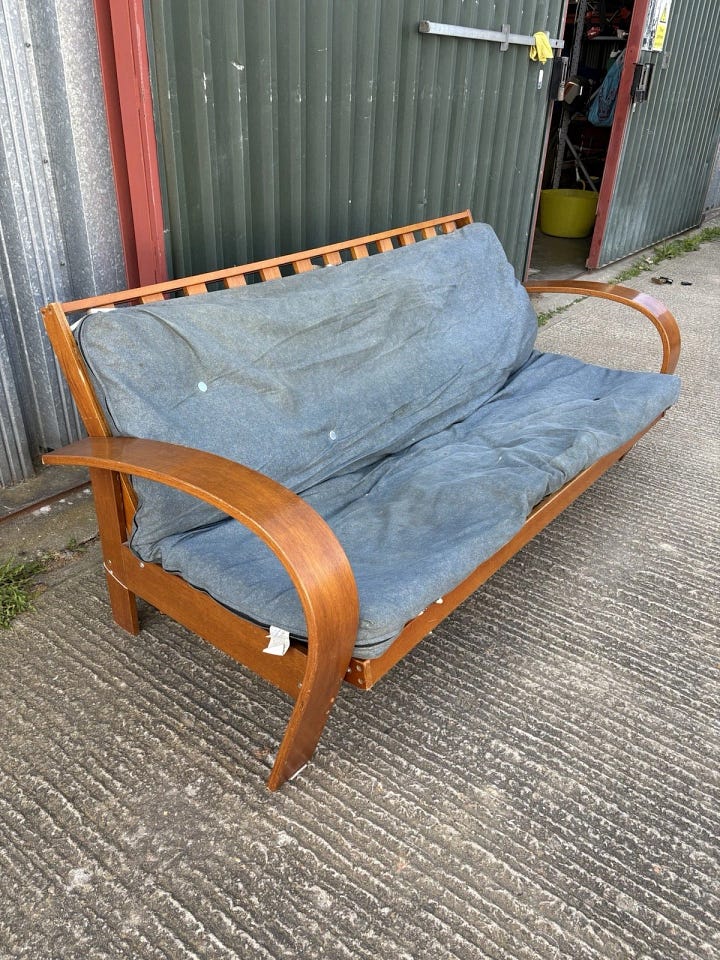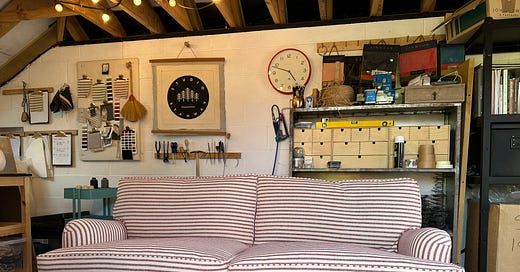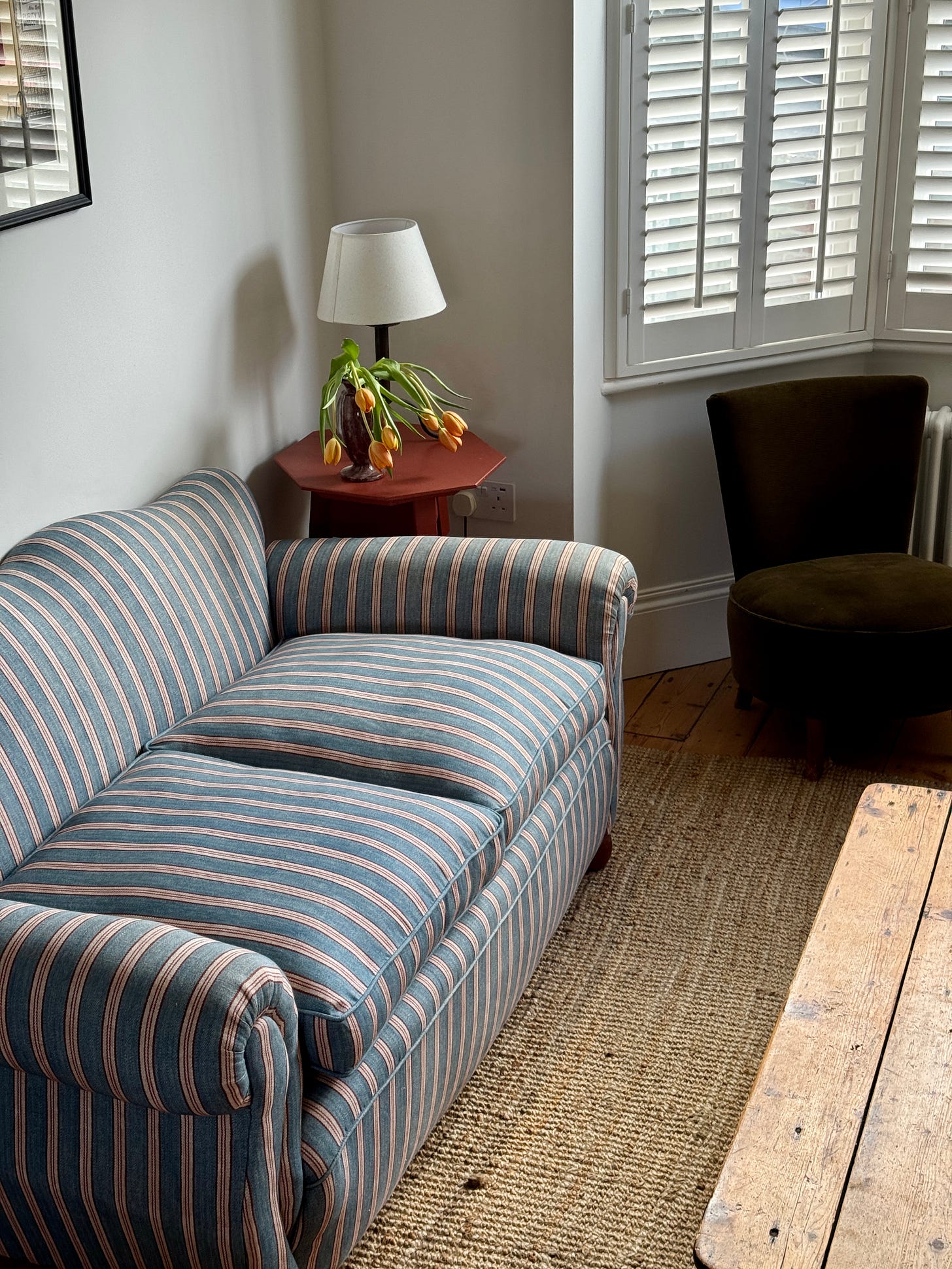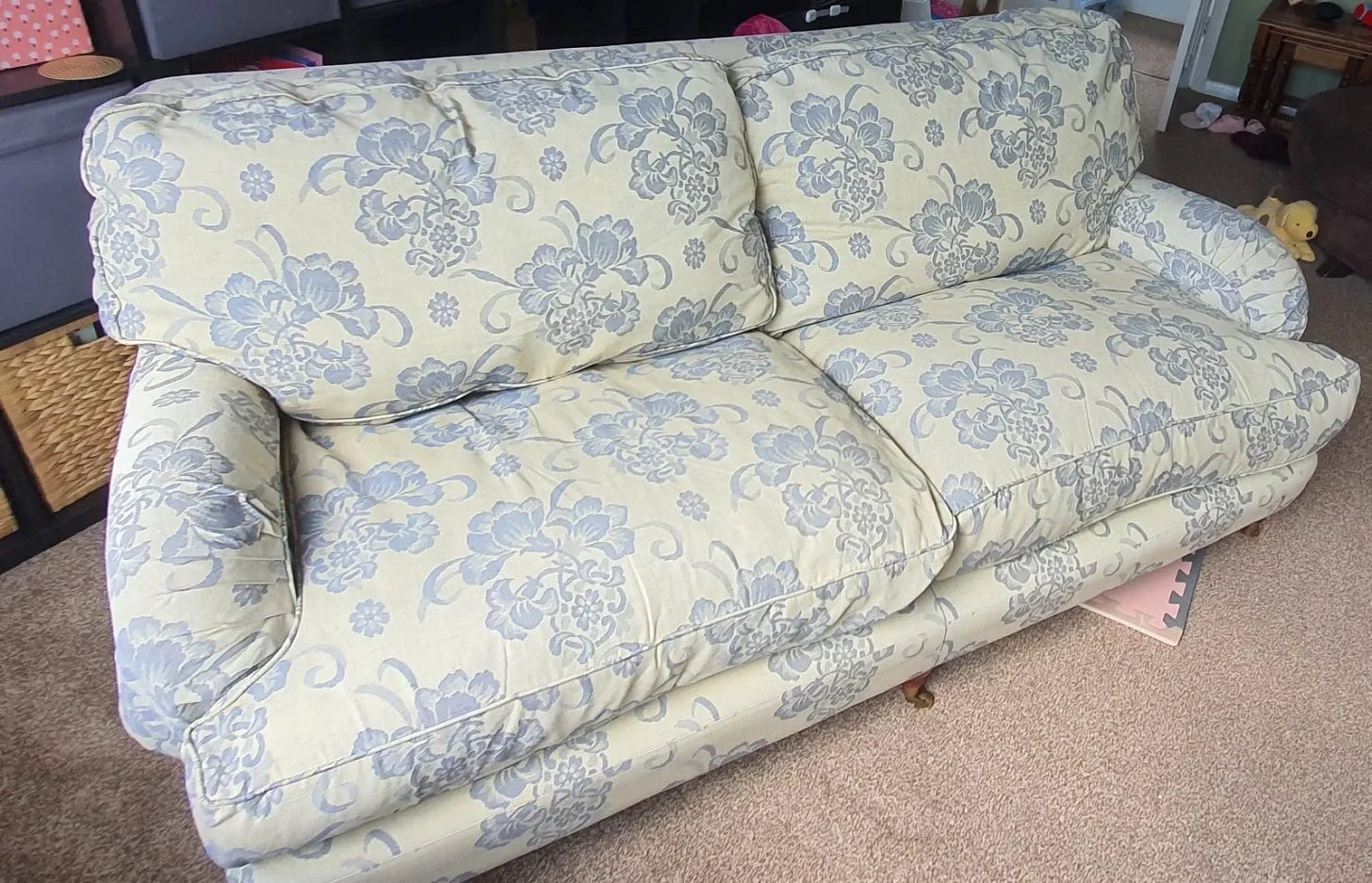Professional advice from an upholsterer
Everything you need to know if you're considering re-upholstering a second-hand piece
Considering having a much beloved piece of furniture restored or would love to one day when the right piece presents itself? Perhaps you regularly add second-hand sofas you can’t house to your eBay watchlist (just me?) or dream of rescuing every rundown chair you scroll or stroll by (also me). Maybe you just love a good before and after - I mean to say who doesn’t.
Well, this newsletter is for you.
Let me start by saying a huge thank you to my upholsterer Susie Stanway who has generously shared so much amazing advice in this newsletter, from costs and practical considerations, to the names of furniture makers to look out for if you’re sourcing second-hand, as well as favourite fabrics and a list of fellow upholsterers. You can take a closer look at her work on her website or via her Instagram @studiostanway.
I would recommend reading this in the app or on your desktop as it’s longer than usual and may be cut off by some email providers. Whilst all subscribers can enjoy a taster, the full email (and the best nuggets) are behind a paywall as it takes a lot of time to put together newsletters like these and I compensate by charging a small fee. As always a huge thank you to all of you for subscribing to Second Best, these sorts of newsletters (the ones that are hopefully really useful in the long-term) are the ones I love working on the most. Enjoy!
This story starts with our tiny second-hand sofa. An absolute steal on Gumtree at £10 back in 2020 and re-upholstered in Robert Kime’s Tynemouth Stripe. Four years later however, I was still regretting my choice of foam cushions - an attempt at practicality. Sadly, the fabric on the cushions had also faded really badly, which it really shouldn’t have done seeing as it’s a premium fabric* but it allowed me to justify making the switch to feather. Two birds one stone and all that.
Enter Susie, who not only did an amazing job on the cushions (which are now 10 x more comfortable), but had so much useful intel to share, all of which I wish I’d known first time round, I knew I had to put it all into a newsletter.
*the Robert Kime team were really good and sent replacement fabric free of charge due to the fading although I still had to cover the cost of having new cushions made.
Hi Susie, thanks so much for taking the time to answer some questions.
I think upholstery is still a mystery to a lot of people who see beautiful photos online of bespoke pieces, but perhaps don’t know where to begin when taking on a project or are a bit daunted by the idea. It’s also easy to get caught up in the excitement of giving an old or second-hand piece of furniture a new lease of life, and overlook some of the practicalities and costs. Foam cushions aside, I don’t have any regrets about taking on our sofa but there are lots of things I wish I’d known beforehand.
What would your advice be to anyone considering a re-upholstery project who hasn’t done one before?
Hi Rachael! Thank you for giving me the opportunity to talk about my favourite subject. Having a piece of furniture re-upholstered can be a really creative and rewarding experience - you can completely change the look of something, whether that’s superficially through new fabric, or by giving it a total overhaul and re-upholstering from the frame up. Some upholsterers can make frames from scratch too, meaning you can commission them to create something totally bespoke for your home.


First things first, it’s important to consider the overall condition of the piece in question and whether it will need a full re-upholster or just a re-cover. ‘Just a re-cover’ is a little joke amongst upholsterers! If it’s an older piece, look to see whether it’s generally sturdy. If there’s movement in the frame, it will most likely need to be fully stripped back and the frame repaired. Likewise, if the arms and seat are no longer holding their original shape it’s best to replace them entirely. Although makeshift repairs might cost less in the short run, a traditional armchair that’s been properly re-upholstered will last another 100 years - maybe even more.
Other elements to consider are whether the piece requires restoration to wood that’s on show. This will impact the cost of restoration as it’s skilled work and labour intensive - the wood has to be stripped, sanded and re-finished with stains, shellac and wax, or Osmo Oil for more modern pieces. Caning is another technique that’s quite labour intensive. It might be worth getting a price for this sort of repair work before you commit to buying something you’ve spotted on eBay etc.


Price wise, are you able to give a rough gauge on what it costs to get, let’s say an ottoman upholstered vs a three-seater sofa?
It’s hard to say as all upholsterers will charge slightly different rates for their time (so make sure you get a few quotes) but a really good starting point is to know how much fabric you’re going to need for a piece - that four-seater sofa on eBay might be a total bargain but if it needs 20m of fabric it starts to become quite expensive…
Here is how much you’ll need for a range of common upholstery projects:
Ottoman (1-1.5m), drum stool (1-1.5m), mid-century style wooden armed chair (2m), vintage nursing chair (3m), headboard (3m), Parker Knoll style wing chair (5-6m), Victorian style armchair with seat pad (6-7m), two-seater sofa with seat and back pads (10m), three-seater sofa with seat and back pads (13-16m).
If you are looking to source a second-hand sofa or armchair from eBay or Facebook Marketplace, is there anything you should consider beforehand? Is the quality better with older pieces? Any reputable names to look out for?
The frames of older chairs and sofas tend to be made from beech which is very durable so in theory an antique piece could be very old and still be a perfect candidate for re-upholstery. Older frames do tend to be more susceptible to problems like wood worm or movement in the joints but these are easy to fix. If a rail (part of the frame) needs to be replaced this costs a little more but is still not going to blow your budget - everyone charges different rates and obviously all chairs are different but I’d estimate maybe £100 - £200 for replacing a broken rail.
Keep reading with a 7-day free trial
Subscribe to Second Best to keep reading this post and get 7 days of free access to the full post archives.





